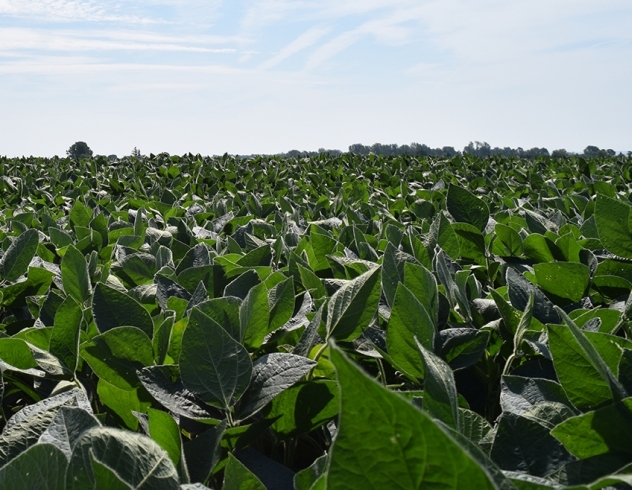News & Events

Crop Corner – Diagnosing Soybean Cyst Nematode
October 03, 2016

The Soybean Cyst Nematode (SCN) is a microscopic worm-like organism with a piercing mouthpart that attacks the roots of soybeans and causes considerable yield losses in Ontario. Yield losses from SCN can range from 20-100% if detected in the soil, and depends on soil type and density of nematodes. Soybean Cyst Nematodes are called the ‘silent yield robber’ as they can feed on soybeans for years with no visual injury symptoms and reduce yields 5-8bu/ac without the grower being aware of their existence. Once injury symptoms appear, yield loss is significant.
Soybean Cyst Nematode can be difficult to detect in your fields. When populations are high, there are visual symptoms to observe which include yellowing of the leaf tissue in circular patterns throughout the field. These symptoms are often mistaken for potassium or other nutrient deficiencies, but nutrient deficiencies can be ruled out by observing the soybean roots and locating ‘cysts’. The female Soybean Cyst Nematodes feed on the roots of the soybean plant- when it is time to reproduce they attach to the root surface and form a cyst, or an egg sac. This egg sac is lemon-shaped, white, yellow or brown and about 1/10th the size of a nodule and can be seen with the naked eye or hand lens on the surface of the root. Dig plants out of the ground carefully and gently shake off the soil, make sure you pull a couple plants as not all plants necessarily will have cysts. If you detect cysts, you can take a soil test from the outside of the ‘hot spots’ through the soybean root zone to get an idea of the number of nematodes residing in the soil. If you have fields that historically have been yielding low, even with a good fertility and weed control program, then you may want to test your soils to rule out SCN. A good time to take these samples is in the fall as this is when SCN numbers tend to be highest. The sampling procedure is similar to a regular fertility test, test up to 20ac per sample and 10-20 cores per sample and keep the sample cool until it can be sent. Generally sandier soils are more at risk for SCN infestation, but there are increasingly more clay soils testing positive. We have identified more than a dozen fields in both Niagara and Haldimand that have tested positive for SCN.

You can manage SCN however it is nearly impossible to irradicate it. Crop rotation with non-host crops is one of the best ways to manage Soybean Cyst Nematode coupled with avoiding soil transfer between fields (clean equipment if possible) to stop the spread of SCN. Planting SCN tolerant soybean varieties will also significantly increase yields in fields with known SCN populations. We offer a number of excellent varieties at Clark Agri Service with SCN tolerance. Don’t hesitate to give us a call if you suspect you may have SCN in your fields and one of our Agronomists would be happy to assist you during the testing process.

This Crop Corner has been written by Melody Robinson, Sales Agronomist at Clark Agri Service. Melody can be reached by email mrobinson@clarkagriservice.com or by phone 289-775-1188